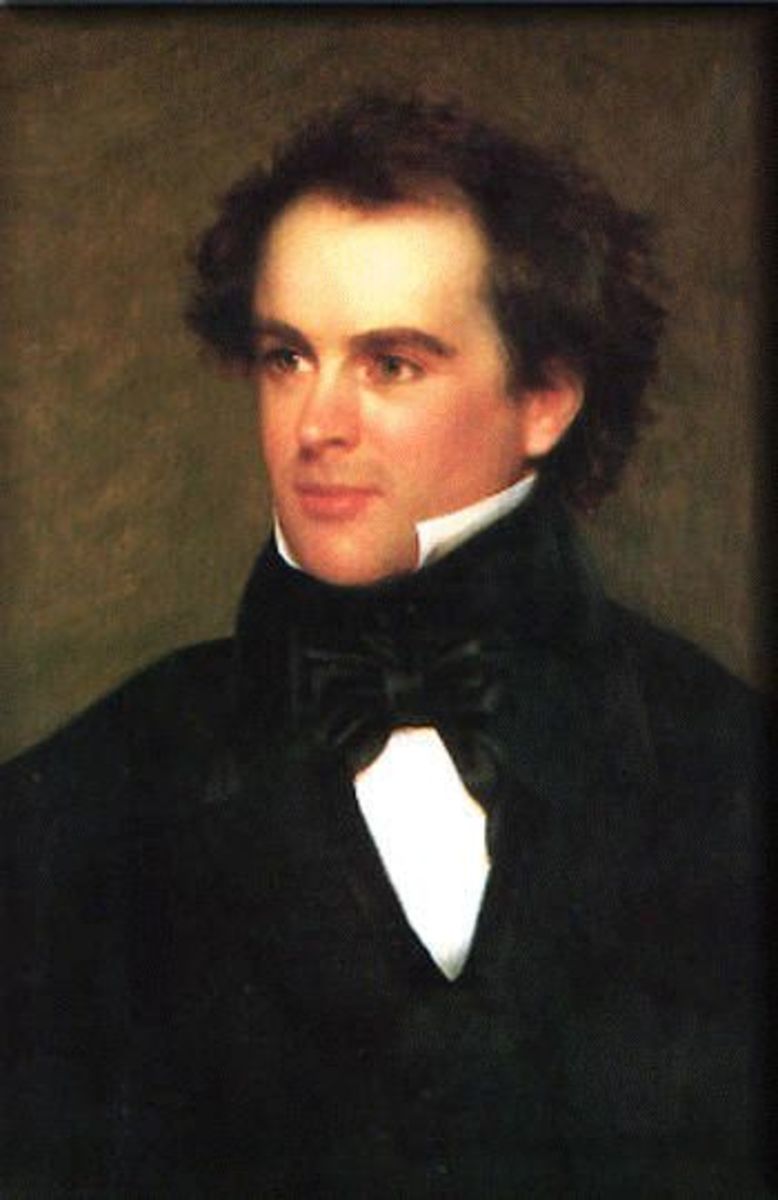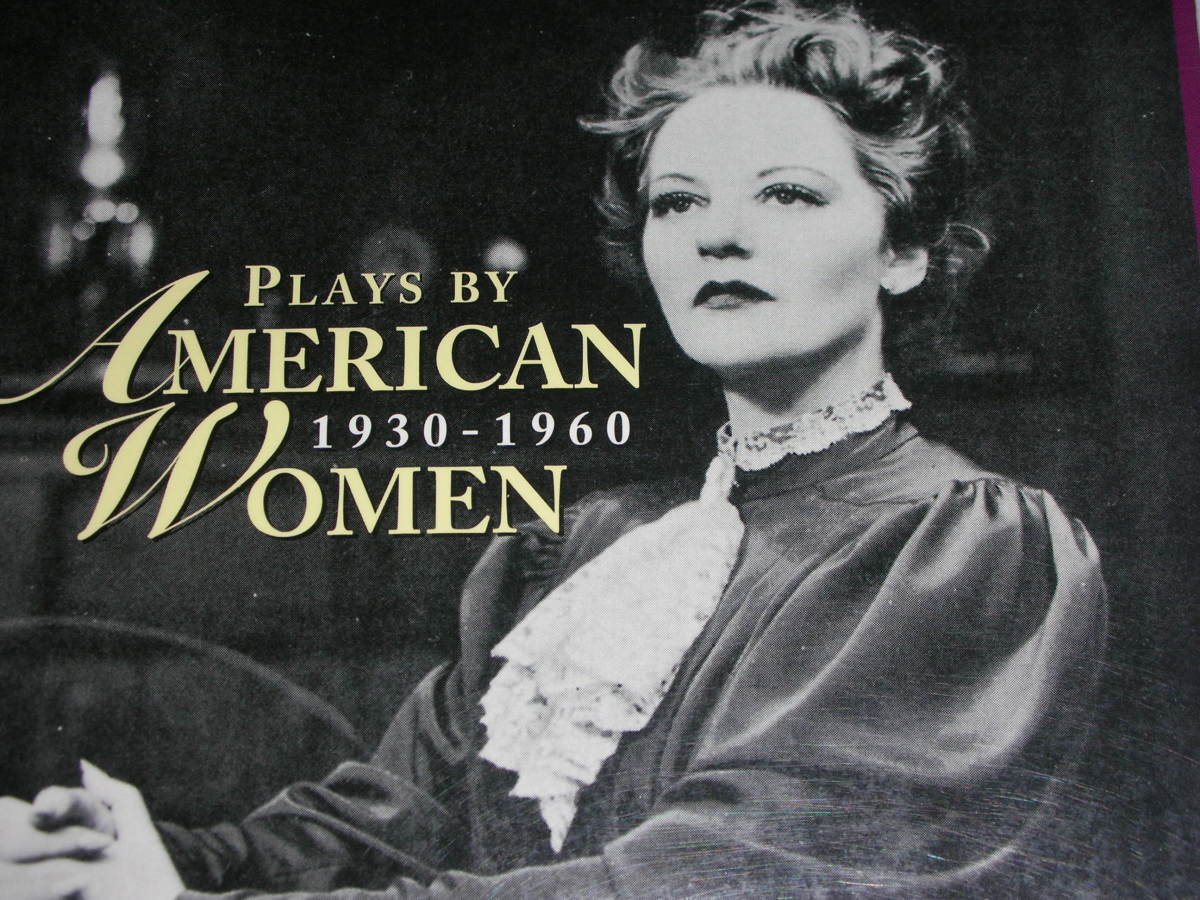Best and Worst Vampires in Literature and Television
A couple of years ago, I started a blog whose sole purpose was to act as a space in which I could criticize Stephenie Meyer's Twilight. Twilight and its spawn are terrible—not only because of the misogynistic, racist worldviews they purport, but also because they bring shame to the Western vampire tradition.
Vampires are a tricky subject. I think that the general population agrees that our contemporary notion of the vampire originated in Bram Stoker’s Dracula, but really the vampire as a literary and cultural phenomenon dates back to (pre-)ancient times.
This is to say that there are precedents in place, standards off of which artists throughout history have modeled their vampires and vampiric creatures. Granted, there have been some really bad vampires over the years—The Count, The Anointed One, Duckula, Max, even Dracula himself comes to mind—as well as some pretty bad-ass ones, such as Count Chocula, Santanico, Pandemonium, and the vampires of Brian Lumley’s Necroscope; but Meyer’s Edward is hands-down the stupidest bloodsucking idiot I’ve ever seen, read about, heard of, what have you. I’d rather discuss Lestat the Brat than Stephenie Meyer’s sparking suck-fest (and not even a literal suck-fest: Edward is such a horrible vampire he doesn’t even drink human blood, but prefers mountain lions).
I’m not saying that I disagree with the concept of “artistic license”—quite the opposite, in fact. But it seems to me that Meyer has completely dispensed with the license and tried to reinvent the wheel completely with her rendition of the vampiric tradition. Thus, in the spirit of literary criticism, let’s take a look at some real and real cool additions to the vampire continuum. Unfortunately it’s too late for Meyer to take a cue from authors who know what they’re doing.

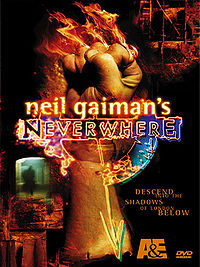
Best Vampires: The Velvets
These characters appear in Neil Gaiman’s Neverwhere, both the novel and the 6-part BBC TV series. They aren’t your typical vampire; they don’t go around sucking blood and turning humans into their minions or peers. They do, however, suck the life from people, literally: Gaiman illustrates the process as a de-breathing, a transfer of breath/life from the victim to the Velvet. The transfer leaves the victim weak, pale, cold as death. But it can be reversed, if the Velvet chooses (or is forced) to breathe the life back into her victim. Of course the Velvets are female, possibly lesbians, and seduce their victims to their deaths. But they’re not all-out sex fiends: their seduction is subtle, not physical more than mental and emotional, nor more visible on their end than on the part of their victims. The BBC stayed true to the book in its depiction of Richard’s seduction by Lamia. Yes, she is beautiful, but there is something about her, more powerful than her beauty, that sucks Richard in so she can suck his life out.
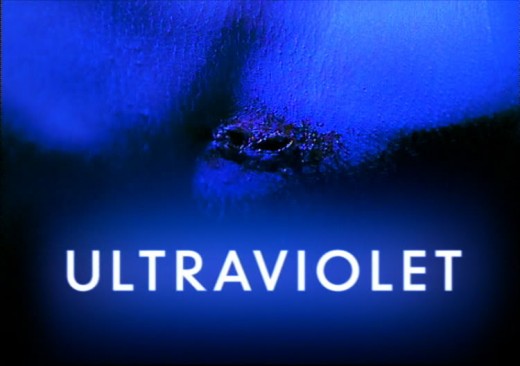
Best Vampires: Code V, the Vampires of Ultraviolet
And no, I don’t mean the awful film with Milla Jovovich (I think I liked Van Helsing better). The BBC has again put a clever twist on the vampire myth, one that has an awesome main plot underpinned by lots of intricate smaller plots that reflect and subtend some contemporary issues (disease, mortality, and the frailty of human bodies; rights of the individual/privacy issues especially in the medical sphere; the ever-present relationship thing; crises of faith (of all kinds—religious, political, social); sexuality, legitimacy, and protecting the body; et cetera).
In this case, vampires suck blood; they need it to survive; but they don’t kill first and feed second. Instead, they put the bloodsucking to their victims as a choice: like Danny knocking at the window, you have to invite them in.
Unlike Edward, whose unnatural beauty surpasses that of anyone (except his creepy family) around him and who, like an anorexic girl, refuses to eat lunch like the rest of the boys and girls in the cafeteria, the vampires (“leeches”) of Ultraviolet masquerade as essentially human, even though they don’t leave fingerprints; they physically don’t appear on video, film, or in mirrors and reflective surfaces; and they are inaudible on electronic devices and telephones. As Vaughn notes, “the only machine that can see or hear a leech” is a human—understandable, since every Code V was always already a human.
Yet Code Vs don’t forcibly recruit humans to their side. Everyone has a choice to join or not join, and rarely do we see a Code V leech completely drain a human host, turning the host into a Code V. The vampires themselves exert an enormous amount of self-control but they ultimately don’t give up the biological necessity—feeding on human blood—that characterizes them. Here again this series brings an innovation to the feast, making the vampiric feeding process relatively painless and of a different effect than tradition suggests. The wound of a Code V host heals over within minutes of the feeding, and can then only be detected under ultraviolet light. The bite wound can be treated: the skin is burnt away with lasers. If the wound goes untreated, then the host becomes a sort of cattle-like minion of the parasite, susceptible to suggestion and averse to sunlight, a pawn in the vampires’ game.
Meyer buys into the old story that the bite hurts and makes the host “just like us”—that is, a vampire—but she doesn’t get too detailed about the process, only that it’s “very, very painful” (288). I don’t know yet what to make of Edward’s transformation into a … is he a vampire? He and Bels never mention “the word” vampire, and the very fact that she mentions that they never say it, as well as the context in which she makes this observation, leads me to believe that Edward isn’t even a vampire right now, only “dying…to become” one (288). I hope this is just another epic fail on the part of Meyer and her editor, or else the whole book to this point needs to be rethought.
The Code V leeches are immortal. They can be repelled by ultraviolet light or allicin, the chemical compound in garlic, but these things alone can’t kill them. In fact, they don’t “die,” but rather are neutralized, and this by exposure to sunlight (their photophobia stems from this fact, and so they avoid it; compare to Edward, who avoids the daylight because he doesn’t want his sparkly epidermis to cause “traffic accidents” (Meyer 291)).
Something interesting to note about the Ultravioletian manifestation of the vampire: The “Congregation of the Doctrine of Faith”—the government-funded organization in charge of locating and neutralizing Code Vs—discovers that the vampires can be affected by contaminated or polluted blood, which brings to light another way this series successfully elaborates upon and transforms the vampire myth. The stake through the heart isn’t just the realization of a folkloric tradition determining that a vampire must be staked to die; rather, the stake serves to open the chest cavity and introduce carbon, a contaminating agent, into the heart, which pumps the blood that fuels the vampire. So carbon, too, neutralizes the vampire. I’m a fan of gore, but I like this scientific approach to the point that I almost think any chopping off of heads is just for show.
It seems that Code V molecules have a high oxidation rate, because they don’t experience just a plain old neutralization, but rather a combustion, an immolation. This highlights a significant aspect of the series’ plot: these vampires have goals. The vampires’ goals don’t necessarily extend beyond the sphere of their survival, but they are still interesting in terms of the critique they launch against humans. The vampires claim to be developing a synthetic blood off of which to survive so that they don’t have to feed off of humans anymore, allowing humans and vampires to co-exist. But really the vampires are old, they’re immortal, and they take a long view of life: they can see that, with the proliferation of diseases of the blood like CJD and AIDS, and phenomena like global warming, humans are now more than ever capable of destroying themselves.
And of course the existence of Code Vs is bound to the existence of human blood. Human blood sustains them, even regenerates and resurrects them when combined with the ashes of neutralization. So the vampires don’t just fun it, controlling humans for the sake of it; they are trying to protect their food source. It sounds evil because they’re perceived as monsters by the humans who battle them. But vampires don’t even need to bite to get what they want: they’re intelligent and persuasive, full of human emotions and capabilities—in a superior way (they create technology as quickly as humans do, and let’s face it: vampires have some obvious advantages over humans). These vampires are essentially inhuman, if essence even comes into play here; but still they blur easy distinctions between “good” and “bad,” “human” and “leech” because the fact is that they look like humans (no sparkling) and, for the most part, act like them. They exist in the interstice between the human and the non-human, the traditional drain-you-dry-sexual-chocolates vampire, characterized by a persuasive force that allows them to play the psychological games by which they draw humans in for the sake of their preservation. So the question remains how to annihilate a “race” so similar to the “human”; evolved, in fact, from the human? How to do it without stripping away the “things” that comprise the “essence” of “humanity?”
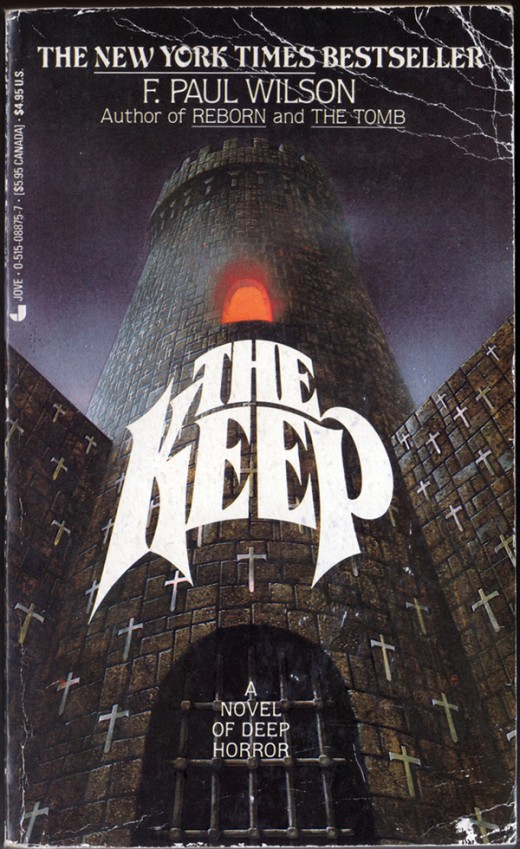
Best Prelude to a Vampire's Lover: Magda Cuza
While reading F. Paul Wilson’s The Keep I discovered something. Meyer's Bella has always-already existed.
Not because, it seems to me, a lot of authors tend to characterize their females (or at least select ones) in the same way that Meyer creates Bella: she’s beautiful, independent, intelligent, and can read. But let’s face it. Bella hates herself, refuses to recognize any good quality in herself, constantly puts herself down, and would rather be shut up in her room with Jane Austen than making out with that Indian kid (Jason? so unmemorable I can’t even remember) on the beach at La Push. She consistently pushes all the men who want her away even though all she wants is to be dominated, engaged in some type of relationship with a guy. Unfortunately, she’s chosen Edward (or he’s chosen her, as we are led to believe).
However, like I said, I’m not calling Bella always-already simply because she follows this pattern that’s been typical throughout literary history no matter what language you’re reading in or what genre. I’m saying this because Magda Cuza is the same person, but she was written about thirty years earlier than Bella. It’s kind of disturbing that one of my favorite authors created the prelude to one of my least-favorite characters (have to love to hate Bells) in any book I’ve ever read (Edward is a close second, though, just because I wish he’d give up on the mountain lions and tear Bells’s throat out sometimes).
For those of you (and that’s probably everyone except my dad, who won’t read this) who aren’t familiar with The Keep, it’s an extraordinary piece of literature that goes something like this:
A captain of the German Army (emphatically not a Nazi) is stationed in this keep in the Dinu Pass, Romania. His men keep dying, morbidly, so he radios for help, and the SS arrives. SturmbanführerKaempffer is a jerk of course, and this quality shines through at our every encounter with the man, since Wilson has such a talent for inner dialogue and omniscient character description. Kaempffer really doesn’t care about Woermann’s men; he wants to get to Ploieşti so he can set up a death camp and toast some Romanian Jews. After some rigmarole and blah blah blah, he calls Theodor Cuza, a crippled Romanian Jewish historian and ex-professor, and his daughter Magda to the keep: he finds out that the two of them know a lot about the region and the building, and figures that they can find a way to stop the murders.
Well, the murders stop for a couple of days, and we meet a bad-ass vampire/boyar named Molasar—he’s important, since he (and, I suspect, someone else) is a vampire, just like Edward, except he’s not as dumb as Edward (and I also don’t think Molasar is Vlad’s long-lost ancestor or whatever Robert P. claims to be) … but you should just read the book and find out the rest of the story. I’ve got to talk about Magda.
At first I thought she was great. She’s a 30-year-old woman who’s basically never been kissed, one of those deals you know, because since her mother died she’s been too concerned with taking care of her father, who has scleroderma. She’s a wonderful musician, a fact that she recognizes but tends to downplay or outright deny. She’s also very intelligent, fluent in several languages, and passionate about music, literature, and history. Magda is also inspired. She wants to do things, to leave an impression on the world, but she’s not overly ambitious: “Not a big mark … just a scratch would do” (Wilson 114). She’s writing a book of songs for the mandolin, and though she realizes that the book probably “would never be famous or popular,” at least someone will buy that book, play her music, attribute her name to the song, and “know that Magda Cuza passed this way” (114). This is a touching, and reasonable, dream for her to have, especially since it’s “not easy being a woman” in Magda’s world—especially “if you were Jewish” (113). This is all true, but still Magda isn’t just some flop who mopes and sighs and isn’t going to try to do anything for herself.
Bells starts out this way, too. She moves in the first place to Forks because she wants her mother to be happy and, I think, so that her father won’t be alone—so that he can eat more than cereal for all of his meals. She has her moments when she’s confident in herself, particularly in her creations, like her Shakespeare essay, for example. She’s pretty and so is Magda, but they ignore any advances made toward them. They both know they’re smart. They have interests that extend past texting and having kids. They can both cook, but they wear shoes, too. They do things for themselves and for others.
Neither Magda nor Bells is going big, but neither is going home, either.
That is, until Bella meets Edward, and we all know what I’ve had to say about that (or, at least, we all will know soon enough). It’s like Edward brings out in Bella this whiny stupid unconfident snot who just wants to cry about it all day.
Years earlier, Magda met Glenn.
I seriously wanted to throw up while reading these scenes, but I was on a plane and couldn’t do that to the person next to me. I wish I would have read these novels a year and a half ago so that I could’ve asked F. Paul in person why he ruined Magda, and also if he’s ever read Twilight and entertained the notion that Meyer is a copycat. Basically you can see Magda going downhill from the moment Glenn comes to the inn where she’s staying. She does a good job of refusing to give up her room just so he can have a view of the keep … but after that, forget about it. Glenn applauds her effort at being independent, and thus transforms her into a dependent careless dolt. Sure, she’s still concerned about her father, but Magda: where your brain at? There is a period each day when she doesn’t think about Papa; then she gets this horrible idea to sneak into the keep in the middle of the night even though she knows that not only does a bloodsucking life-consuming vampire live there, but also stationed there are the Germans who, when they’re not having their throats torn out, want to rape her.
This sounds like an extremely stupid idea to me. Why is she doing it? Because she doesn’t want her crippled, basically dead, father, who knows a lot more about Romanian folklore and history and evil texts and Vlad Ţepeş than she does, to face Molasar alone—despite the fact that the man has been talking to this member of the moroi for a couple of days and has begun to forge an uneasy alliance with him. Of course, all goes awry: she almost gets raped by two Nazis, and then Molasar has to rescue her. Kudos to her for showing us Molasar’s soft side, but really? Her brain has disintegrated because a man paid attention to her.
I’m sorry, because Glenn paid attention to her. She’s met other men before, but never made a move, or has rejected them—Bells’s tactic. Inevitably they have sex, and Magda basically turns into “Oh my God I’m so happy someone finally likes me because I have sucked so bad for the past 30 years and even though I know I’m smart and talented and lots of worthy men have wanted me it has taken the angry and apologetic lovemaking of this red-haired muscle-bound beefcake who may or may not be a vampire and whom I’ll probably never see again to make me feel validated.” I can’t even reproduce the description of Glenn here, or you seriously might think Edward just dyed his hair red and went on vacation to WWII Romania.
Of course I’m happy that Magda has fallen in love (but of course through the experiences of other females in literature and in life, in approximately 7–10 days she’s going to realize it sucks and isn’t true), that she finally has someone who shares some of her interests and is not her father. But she, like Bells, loses all of her spirit and character once she meets this guy, and now she’s just another weak female lead. Upon Magda’s transformation, I can’t help but feel like I’m reading an older (but undeniably better) version of Twilight: vampires, abnormally muscular and handsome men, and a puky annoying female lead.
Chapter 25 of The Keep begins with the following word: “Joy” (Wilson 292). I want to cry.
A Brief and Unbiased List of the Worst Vampires
Edward Cullen.
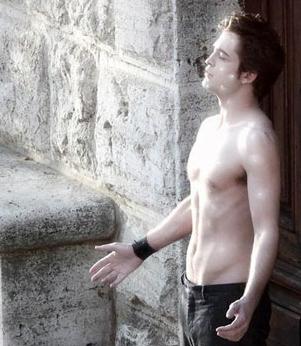
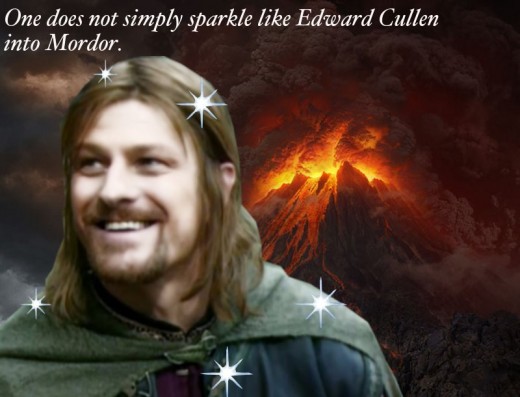
Works Cited
Meyer, Stephenie. Twilight. New York: Little, Brown, & Company, 2005.
I might also add that besides the quotes from the book, all or most hyphens are copyright S. Meyer as well—or at least the idea to use hyphens to set off parts of a sentence that should either be expressed by a simple adjective, subordinated to a dependent clause (please God use a comma), or cut out altogether—since she’s got a monopoly on them.
Wilson, F. Paul. The Keep. New York: Jove Books, 1986.

